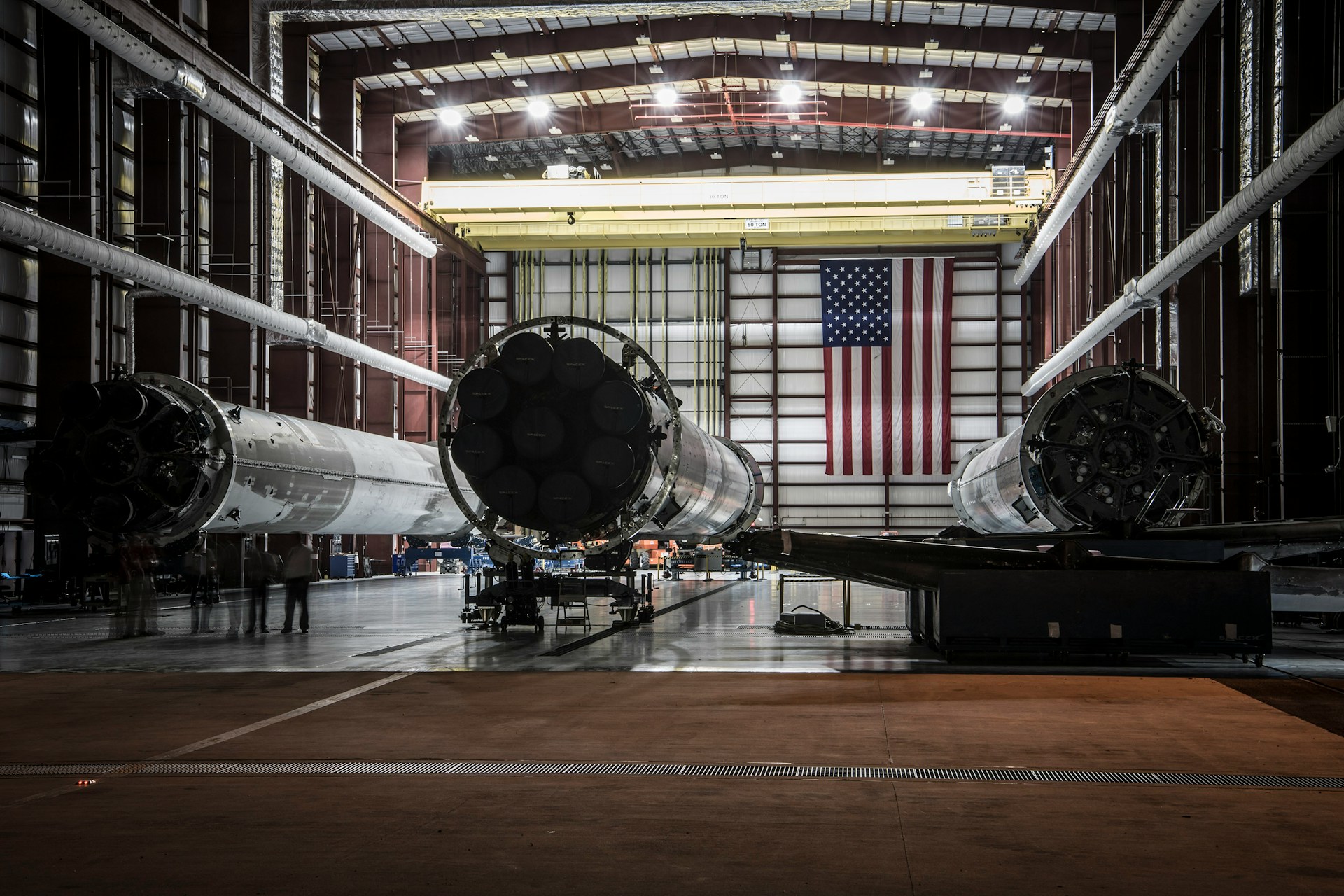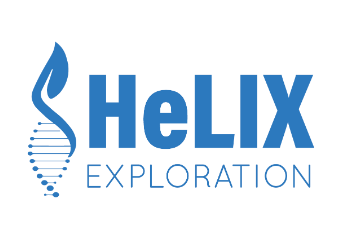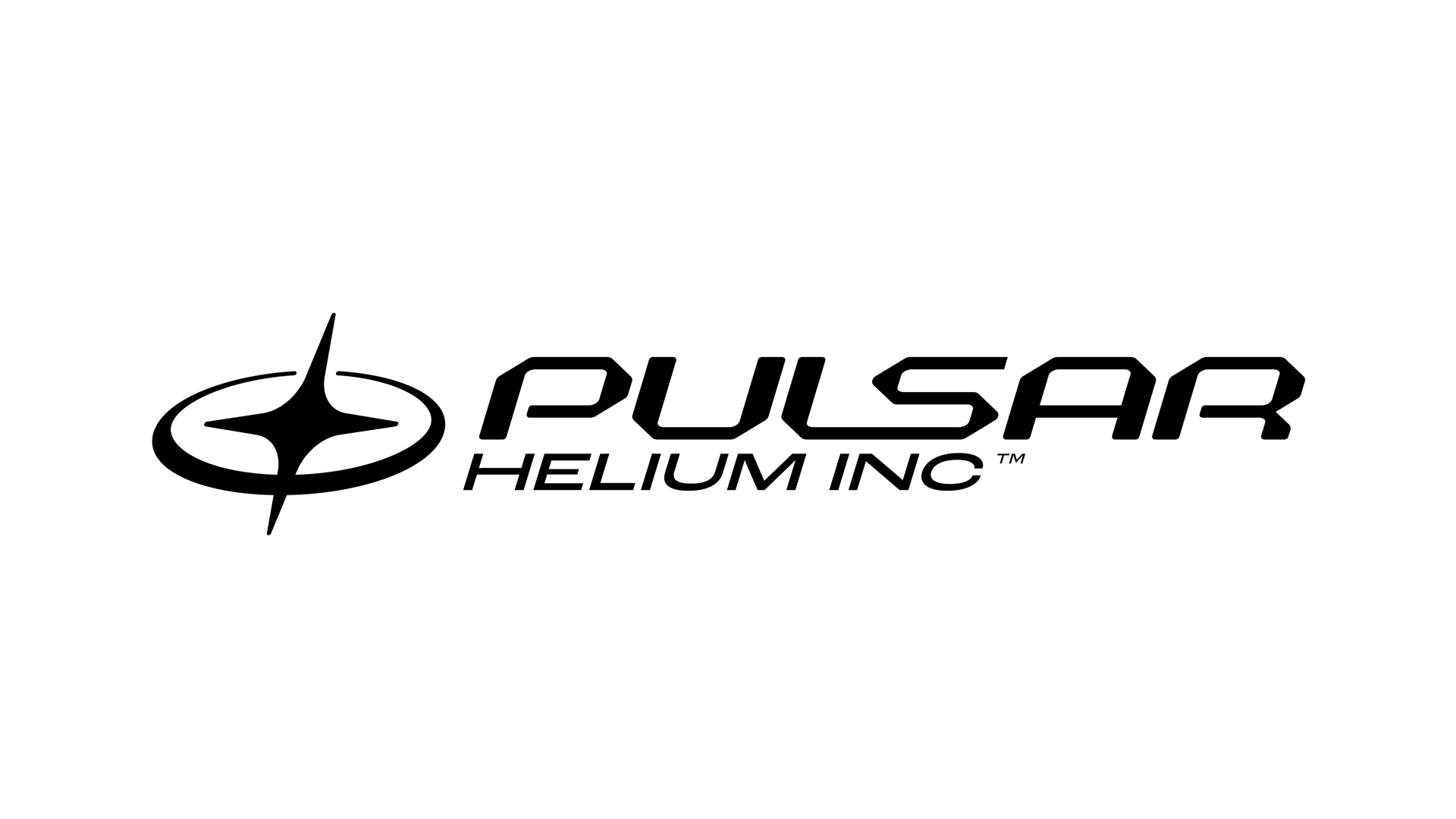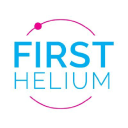The Critical Element Facing Supply Shortages as Semiconductor and Healthcare Demand Accelerates Through 2034

Helium market to hit $46.8B by 2034 amid supply constraints; semiconductor demand surges; emerging producers with promising projects offer investment exposure.
- The global helium market is projected to grow with demand driven primarily by semiconductor manufacturing (24% of current demand, expected to reach 30% by 2030), healthcare applications (25% by 2030), and aerospace (18% in 2023).
- Persistent supply constraints from major producers US, Qatar, Algeria create structural market imbalances, with new projects in Canada, Tanzania, and South Africa offering potential diversification but facing extended development timelines.
- Several public companies are advancing helium projects with promising results: Pulsar Helium, Georgina Energy, Blue Star Helium, and Helix Exploration among others.
- Helium's strategic importance is increasing as countries view supply security as crucial for high-technology industries, prompting government involvement in resource development and stockpiling initiatives.
- The investment thesis for helium centers on the supply-demand imbalance, geographic diversification of supply sources, and long-term strategic value in critical industries like semiconductors, healthcare, and aerospace.
In the evolving landscape of critical commodities, helium has emerged as pivotal elements underpinning technological advancements and infrastructure development. For investors seeking to diversify their portfolios with commodities poised for growth, understanding the dynamics of these markets is essential.
Helium: Indispensable Resource in Modern Technology
Helium, a noble gas renowned for its unique properties such as low boiling point and non-reactivity, plays a crucial role in various high-tech applications. As of 2025, the global helium market is undergoing significant transformation, driven by shifting supply dynamics and evolving demand patterns. According to research, current market conditions reflect a complex interplay between traditional and emerging applications, with the semiconductor industry emerging as the dominant consumer, accounting for approximately 24% of global demand. This represents a notable shift from historical patterns where cryogenic applications, particularly in medical imaging, dominated consumption.
As the global economy increasingly depends on semiconductor technologies, quantum computing, and advanced healthcare solutions, helium has emerged as an indispensable resource facing significant supply challenges.
Key Industry Applications Driving Demand
Electronics and Semiconductors
The semiconductor industry remains one of the largest consumers of helium gas, using it for wafer production and cooling processes. With the growing demand for advanced electronics and chips, particularly for IoT devices and automotive technologies, this segment is expected to dominate the helium market.
According to market analysis, the semiconductor industry's expansion, particularly in Asia, is expected to increase its share of global consumption to over 30% by 2030. This growth creates additional pressure on supply chains and emphasizes the need for new production sources.
Healthcare and Medical Technology
Helium plays a vital role in the healthcare sector, particularly in magnetic resonance imaging (MRI) machines. The gas is utilized in cryogenic cooling systems to maintain the ultra-low temperatures required for superconducting magnets.
As per recent studies, the healthcare sector is projected to contribute nearly 25% of the total helium market revenue by 2030. The adoption of advanced diagnostic tools is further boosting helium demand in emerging markets.
Aerospace and Space Exploration
The aerospace sector has shown a rising demand for helium due to its applications in rocket propulsion and pressurizing liquid fuel tanks. In 2023, the aerospace segment contributed approximately 18% to the global helium gas industry revenue. With numerous countries investing in their space programs, this share is expected to rise further," notes industry research.
Companies like SpaceX and NASA rely heavily on helium for rocket operations, particularly for pressurizing fuel tanks. As private space exploration initiatives increase globally, the helium demand within this sector is set to soar.
Supply Constraints and Strategic Importance
One of the most compelling aspects of the helium investment thesis is the persistent supply constraints that continue to shape market dynamics. The U.S. Federal Helium Reserve's diminishing role has accelerated the transition to a more commercially driven market structure, while Qatar's expansion through LNG projects represents a significant shift in global supply patterns. Russian projects, particularly the Amur facility, face ongoing development challenges that impact their contribution to global supply.
According to an industry analysis report,
"Despite robust demand, the helium industry faces supply constraints due to limited sources and geopolitical factors. Major suppliers such as the United States and Qatar are often affected by production halts or trade restrictions, impacting global helium availability."
New helium projects under development in Canada, Tanzania, and South Africa offer potential supply diversification, though development timelines remain extended. These projects typically target higher helium concentrations in nitrogen-rich gas streams, potentially offering more economical production compared to traditional natural gas-based extraction.
The strategic importance of helium cannot be overstated. Research and Market's The Global Helium Market 2025-2035 indicates that,
"Strategic considerations are increasingly influencing market dynamics, with countries viewing helium supply security as crucial for high-technology industries. This has prompted increased government involvement in resource development and strategic stockpiling initiatives."
Investment Opportunities in Helium
Given the tight supply-demand balance and the critical role of helium in burgeoning industries, investment opportunities in helium-focused companies are compelling. Prominent players in the industrial gas sector with significant helium operations. Additionally, specialized helium producers like Pulsar Helium, Georgina Energy, First Helium, Helium One, Blue Star Helium, and Helix Exploration are actively exploring and developing new helium sources.
Pulsar Helium
Pulsar Helium Inc. is making significant progress with its flagship Topaz helium project in Minnesota, USA. Recent operational highlights from the company's financial report indicate promising developments. The deepening operation at the Jetstream #1 appraisal well, reached its target depth of 5,100 feet on January 2025. The company expects alarger helium-bearing reservoir zone with multiple helium zones encountered throughout the deepening operation with the initial results.
Notably, mud log gas levels containing up to 7.24% helium were encountered, although these are likely contaminated by air. The company believes uncontaminated samples will report higher helium concentration. Additionally, the company completed drilling operations at Jetstream #2, reaching a total depth of 5,638 feet on February 1, 2025, with mud log data reporting helium leves up to 3.5%.
Thomas Abraham-James, President & CEO of Pulsar, commented in the news release:
"We are delighted to have completed the successful deepening of Jetstream #1 and the spudding and completion of Jetstream #2 early this year. Pulsar management is encouraged by these results which support our belief in Topaz being a material commercial helium discovery."
Georgina Energy
Georgina Energy is advancing its Hussar and Mt Winter projects in Western Australia and the Northern Territory, respectively. The company recently published a scoping study that confirms the potential for a commercial gas field development at Hussar, capable of producing helium, hydrogen, LNG, and argon.
The study indicates strong financial prospects, with a 40MMscfd raw gas flow scenario generating an IRR of 27.3% and an NPV of US$1.64 billion (10% discount rate). Based on potential field flow rates of 10-60 MMCFGD and varying sale prices, the company estimates potential net pre-tax profits between US$7.3 million to US$208 million per annum.
Anthony Hamilton, Chief Executive Officer of Georgina Energy, stated in the news release:
"The scoping study enhances the Company's understanding of the proposed off-take negotiations following the successful development of both Hussar and Mt Winter, which aim to produce commercial quantities of helium, hydrogen, and natural gas in Australia."
First Helium
First Helium represents a compelling investment opportunity in the helium space, with its focus on light oil development at its Worsley Property in Northern Alberta. The company has recently advanced its drilling program with two wells - the 7-30 PUD well and the high-impact 7-15 exploration location, which has been successfully drilled and cased for completion and testing.
First Helium's CEO Ed Bereznicki stated in the news release:
"We are very excited to be moving ahead with the drilling of our 7-30 PUD well along with our high impact Leduc anomaly, 7-15, which on seismic is approximately 5X the areal extent of our successful 1-30 light oil pool discovery."
This approach aligns on the importance of cash flow generation to fund helium development. With over 53,000 acres along the Worsley Trend, First Helium has substantial exploration potential, positioning it as a potential long-term player in the North American helium market that could benefit from the projected growth in helium demand highlighted in the main article.
Helium One
Helium One Global represents a unique investment proposition with its dual-focus strategy: the 100%-owned Rukwa project in Tanzania and a 50% working interest in the Galactica-Pegasus helium development project in Colorado. This geographic diversification aligns with the investment thesis outlined in the main article regarding the importance of developing helium resources outside traditional supply regions.
The company announced increased helium concentrations at the State-16 well in the Galactica Project is particularly noteworthy, with samples showing 2.17% helium - a material increase from the previously reported 1.65%. This concentration level positions Helium One competitively in the market, especially as demand for helium continues to grow from semiconductor and healthcare applications.
Additionally, the company has commenced drilling the Jackson-4 development well at the Galactica project, representing further progress toward commercial development. Earlier discoveries at Galactica/Pegasus delivered gas flows ranging from 125 to 412 Mcfd with high helium concentrations between 2.0% and 6.1%, demonstrating the project's potential.
Blue Star Helium
Blue Star Helium presents a focused pure-play helium investment opportunity through its Colorado-based Galactica project. The company has made significant progress with the Jackson 31 well, which has demonstrated promising natural flow rates of approximately 250 Mcfd and helium concentrations of up to 2.2% (air corrected).
The company's development approach is methodical and technically sound, with Blue Star Managing Director & CEO, Trent Spry, noting in the news release:
"We are excited by the initial flow tests and the early sample results. The higher natural flow rate at Jackson 31 reinforces our confidence in the reservoir's production potential. The natural flow and projected initial rates are consistent with the adjacent Red Rocks commercial development."
Blue Star's projected stabilized flow rates for Jackson 31 of 300-400 Mcfd, constrained for production optimization, with a maximum potential rate of 500 Mcfd, provide investors with clear metrics to evaluate the project's commercial potential. The company's independent engineering analysis and comparison with adjacent commercial developments add credibility to these projections.
Helix Exploration
Helix Exploration offers investors near-term production potential within the Montana Helium Fairway with a clear pathway to first helium production targeted for summer 2025. The company is executing an efficient capital strategy, recently signing a binding letter of intent to acquire the Weil #1 well and 640-acre leasehold for £230,000 ($300,000), which management estimates will save approximately $1.3 million in drilling costs.
CEO Bo Sears articulates the company's approach in the news release:
"Our approach is simple: build scale efficiently, develop resources strategically, and deliver near-term cash flow. Rudyard is proving to be a high-quality helium asset, and with each step forward, we are strengthening our position in what we believe is one of the most promising new helium districts in North America."
This philosophy resonates strongly with the investment thesis outlined in the main article regarding operational efficiency and geographic diversification. Helix's upcoming drilling of Linda #1 in April 2025, its second production well targeting the same formations that successfully flowed helium from Darwin #1, demonstrates a methodical development approach. The company projects each well at Rudyard could generate approximately $4 million per year in pre-tax cash flow, with the field potentially generating net revenue of $115-$220 million over a 12.5-year life.
This focus on near-term production and cash flow generation differentiates Helix from earlier-stage exploration companies in the helium sector.
Long-term Market Outlook
Market forecasts indicate potential supply constraints by 2035 unless significant new production capacity is developed. The projected demand of 202 million cubic meters by 2035 will require substantial investment in both production and conservation technologies. Price expectations remain bullish, with continued upward pressure likely to drive further investment in conservation technologies and alternative solutions where feasible.
Regional variations in the market are becoming more pronounced, with the Asia-Pacific region emerging as a key growth market driven by rising industrial and healthcare demands. The Asia-Pacific region is emerging as a key market driven by the rising industrial and healthcare demands among others.
The Investment Thesis for Helium
- Structural Supply-Demand Imbalance: Invest in helium as a commodity that faces persistent supply constraints against rising demand from critical industries. The projected supply gap provides a solid foundation for price appreciation.
- Diversification Through Pure-Play Stocks: Consider emerging pure-play helium exploration and production companies like Pulsar Helium and Georgina Energy to gain direct exposure to helium price movements without the diversification of larger industrial gas companies.
- Long-term Strategic Value: Position investments with a 5-10 year horizon, as helium's strategic importance in technology and healthcare is likely to increase, potentially attracting premium valuations for companies with proven reserves.
- Seek Geographic Diversification: Focus on companies developing helium resources outside traditional supply regions (US, Qatar, Algeria) to mitigate geopolitical risks and capture value from new discoveries.
- Technology Enablers: Consider companies developing helium conservation, recycling, and alternative technologies as potential beneficiaries of continued high helium prices.
- Monitor Policy Developments: Stay informed about national strategic reserves policies and export controls, as government intervention in this market can significantly impact prices and company valuations.
Conclusion
The global helium market presents a compelling investment case driven by structural supply constraints and growing demand from critical industries. With projected market growth from $30.4 billion in 2024 to $46.8 billion by 2034, helium represents a niche but strategically important commodity sector with significant price appreciation potential. Emerging producers like Pulsar Helium and Georgina Energy offer direct exposure to this market, while conservation technologies provide additional investment angles. Investors should monitor this space closely as new projects come online and the market continues to evolve in response to technological advancements and shifting supply dynamics.
Analyst's Notes




Subscribe to Our Channel
Stay Informed



















